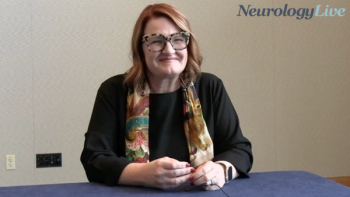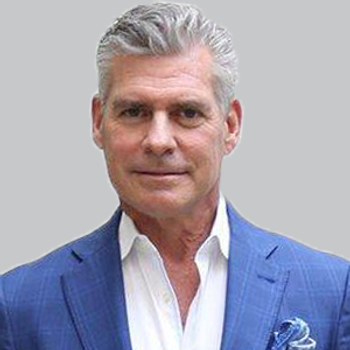
Regenerating Tissue to Target Disease Pathophysiology With Hyperbaric Oxygen Therapy
The director of the Sagol Center for Hyperbaric Medicine and Research at Yitzhak Shamir Medical Center explained his research with hyperbaric oxygen therapy and explored the potential it may hold as a regenerative treatment.
Shai Efrati, MD
This is the second of a 2-part interview. For Part 1,
After conducting studies in a number of other conditions, including stroke, early-stage work is now being done to explore hyperbaric oxygen therapy as a possible treatment for patients with mild cognitive impairment, and even dementia.
New data have implied that it may hold promise for those with diseases like Alzheimer and dementia, as a randomized comparison with placebo for 3 months suggested that the oxygen therapy induced cognitive enhancements as evaluated by perfusion magnetic resonance imaging (MRI).
The research was led by Shai Efrati, MD, director, Sagol Center for Hyperbaric Medicine and Research, Yitzhak Shamir Medical Center; and associate professor, Sackler Faculty of Medicine and Sagol School of Neuroscience, Tel Aviv University. All told, it found that a significant group-by-time interaction in global cognitive function was observed compared to control (P = .0017), with the most impressive improvements in attention (net effect size = 0.745) and information processing speed (net effect size = 0.788).
To find out more about hyperbaric oxygen therapy, the promise of these findings, and its future utility as a treatment, NeurologyLive spoke with Efrati.
NeurologyLive: How did you react to the findings and has this prompted any plans for further work?
Shai Efrati, MD: We are very happy to see first of all the correlation between the tissue and the cognitive function. This is great because at the end of the day, we are dealing with physiology, not deep psychology. Psychology is very important, but here we are dealing with pure biology. We have done animal studies, and others have done animal studies, and the main advantage of those is that you can take the brain out, look at it on the microscope—something that we are still not doing on humans.
It’s exciting, and based on this, there is now an ongoing research program with MCI, which is mild cognitive impairment. So not the fully functional brain, it's a step afterwards. We want to see if we can reverse that as well. We will have to find the optimal candidates—that needs to be defined based on what we see in the biology, not based on the cognitive function. We need to see how far we can take it, meaning, what these the worst patient that can improve with the treatment and we have. We have a lot to learn with regard to that.
Are there any other conditions for which you’re exploring hyperbaric oxygen therapy?
What we have now in our research program includes, of course, stroke—not every stroke is suitable, we need to see the wound and see if the wound is suitable. We also have an ongoing program for TBI or traumatic brain injury; a special focus on the post-concussion syndrome, which is a huge problem; an ongoing program in fibromyalgia, the chronic pain syndrome. Not every fibromyalgia, just the ones where we can see the metabolic dysfunction in the brain.
Generally speaking, it's looks like we are dealing with a lot of stuff. But we are not. We are dealing with wounds. We characterize the wounds in the brain, and if they are suitable, we will treat them. Now, if this wound was initiated by mechanical injury or by stroke or by hemorrhage, for us, it doesn't matter because you're looking at the wound—you're looking at the final results. You characterize the tissue and then treat it.
This is also something new as an approach. You're saying, “Okay, I'm dealing with a tissue, let me see what the wound is.” For example, if you have a wound in the leg, it doesn't matter if a car ran over your leg and caused the problem or somebody hit you in the leg. In the end, it's a problem that needs to be cured. It’s the same way doesn't matter if it was induced by that, that, or that. Let’s characterize the wound at the moment, see the physiology, and based on this, make a decision if this can be good for that kind of damage or not. So, it looks like we are dealing with a lot of stuff, but for us, it’s just one thing.
Do you feel that there a specific population of patients with dementia or Alzheimer that might derive benefit from this?
I will start from the group that we have very good efficacy with, which is the mice that have Alzheimer. In mice that have Alzheimer—you can read our publication—we can demonstrate how we can reverse the Alzheimer with this treatment. We can see the amyloid plaque disappearing, the cognitive impairment improving, the brain, all of it. But we are not mice. That's a small problem.
In human beings, we haven't done a study in Alzheimer. I think that with Alzheimer, it's too late. You don't have tissue. The main issue is to start early, whether it's normal aging or mild cognitive impairment, it doesn't matter because with the vascular dementia at the end, you don't have tissue. But if you start as early as in normal aging, maybe a bit later on in mild cognitive impairment, you still have tissue that can be recovered. That is the main thing. Don't wait. Start early, keep the tissue, and once you have it, you can continue keeping it up.
Is there a way to identify these patients early enough, or do you think that that's still going to be a problem with hyperbaric oxygen therapy?
They say a lot about the amyloid because today, it's quite clear to all of us that the amyloid is not the one that caused the problem. It's a result of the problem. Once you have continuous inflammation in certain areas of the brain, then you will have the amyloid stuck in over there.
We can say that with confidence today because we know with all the antibodies against the amyloid, we know that they are removing it, but still there is no significant change in the clinical course of the disease. So that's what we got. For example, if we are treating mice with Alzheimer with hyperbaric, we are not targeting amyloid. We are not moving amyloid out. But as a result of the improvement in the tissue, the amyloid is also declining. Not because we target them amyloid, we are targeting the core issue.
Can we diagnose that early stage? Yes. First of all, you need a certain suspicion, clinical suspicion. People feel that suspicion. If you feel that your cognition is declining a bit, don't ignore that. That's the first signal. If you don't remember the bulk of the page that you just read a couple of minutes before, don't say, “That's okay.” Say, “Okay, I have a problem. Let's see how I can face it.” That's the first warning sign.
With regard to the brain, if you are doing the type of brain imaging that we have used along the studies, then you can see the decline in perfusion. In normal MRI, you can see some white patches that are popping up all over. That is also a warning sign. The main problem was that until today, we don't have any biological intervention that can actually do something with regard to the basic of the biology. By doing what we are doing, and what others are now investigating, is to tackle the basic biology that that caused the disease. Not the symptoms, not the neurotransmitter. Those are not the problem. The amyloid plaques are not the problem, they are the results of the pathophysiology process. You need to target the pathophysiology process, not the results of the pathophysiology.
This is this is an understanding we have today in the community. We need to tackle it right away. For example, if you're changing your habits by playing sports and eating well—which are things that are not related to the brain—in the long term, you're doing good to your brain because you are reducing the atherosclerosis plaque. You are targeting the basic pathophysiology. It will not go backwards, but you are reducing the rate of the decline. With the hyperbaric oxygen therapy, you can take it backwards because you can generate angiogenesis and other stuff like this. This is the concept.
How quickly do you think this could be used in a widespread fashion, and how expensive would it be potentially for institutions that don't have access to it to implement it?
Like anything new, when it starts, it cost a lot. You don't have in a ton of other places. I remember my father with the first cellular phone. He used to have a bag he had to carry all over—you could buy either a house or to buy a cell phone. That was your choice. But today, anybody, everybody can have it.
We have our center in Israel, which is the biggest in the world, where we are treating more than 250 patients a day. Now we have started to have affiliated centers that are working exactly as we are. We are training the physicians, the medical staff. We have the first center built up in the US in Florida, called the Aviv Clinic. It's a center exactly like we have in Israel. The staff have been trained, they have all the knowledge, all the data. They are doing the same MRI that we are doing over here with the perfusion cognitive test—everything is matched. There are additional centers that are being built all over, and the center that we have now in Florida will be a training center for the additional centers in the US.
It will go but like anything new at the beginning. Unfortunately, it's not available for all, but it will get there. It will just take some time.
Transcript edited for clarity.
REFERENCE
Efrati S, Fishlev G, Bechor Y, et al. Hyperbaric oxygen induces late neuroplasticity in post stroke patients--randomized, prospective trial. PLoS One. 2013;8(1):e53716. doi: 10.1371/journal.pone.0053716.
Newsletter
Keep your finger on the pulse of neurology—subscribe to NeurologyLive for expert interviews, new data, and breakthrough treatment updates.


































